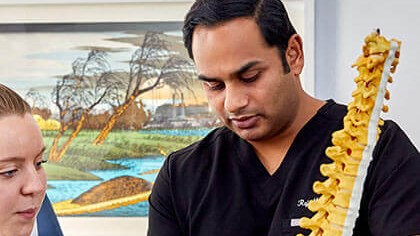Pros of the Placebo Effect: Changing Your Mindset to Maximize Treatment Benefits
&srotate=0)
What is the “Placebo Effect”? What Do Placebos Really Do?
“The placebo effect refers to a patient reporting beneficial effects from an administered treatment with no identified therapeutic value. This is thought to be related to the individual’s positive belief in the therapeutic intervention ‘tricking’ the brain into having a desired effect. For example, if a person is told they will receive pain medication to alleviate back pain, but they are instead given a sugar pill, they may report an improvement in their pain symptoms an hour later. In this case, the sugar pill was the placebo due to its known ineffectiveness in treating pain. This may indicate that at least some degree of an individual’s pain can be modulated by their expectations.
During clinical experiments to test a medical intervention, the placebo is used to act as a non-therapeutic copy of the therapeutic intervention. This is most commonly done in studying medications, but it can be utilized in other medical interventions as well. The placebo is made to look identical to the intervention and the distribution of placebo and therapeutic intervention is random. This is typically done “blind”, meaning the participant is unaware of which treatment they are getting. One can then observe and analyze the effectiveness of the intervention in comparison to any baseline improvements associated with the placebo.
In short, a placebo is intended to have neutral physiological effects but may still be effective since the patient assumes they are actually receiving a course of treatment.”
- Dr. Raj Maniam
What is the Nocebo Effect?
“The nocebo effect refers to when the negative expectations of an intervention or an individual’s poor past experience with an intervention produce worsened outcomes following treatment. If a patient is told a series of side effects from a drug, the patient may report an increased frequency or intensity of those side effects once treated. In other words, certain side effects or reduced success of a treatment may result from poor perception of a treatment.
The nocebo effect is the counter of the placebo effect in terms of how the mind can alter the effectiveness of a course of treatment… So in that sense, one could say it is like the dark side or evil twin of the placebo effect.
A clinical study was conducted by Regine Klinger et al. in 2017 to determine impact of the nocebo effect in pain therapy. The study concluded five relative factors that may increase the nocebo effect and are as such: negative patient-doctor interaction, emotional burden the patient may be carrying, negative information provided, the patient’s lack of positive information, and the cued and contextual conditioning of the nocebo effect.”
- Dr. Raj Maniam
How can the average person (not involved in a research study) use the placebo effect to feel better?
“There is a positive correlation between how strongly a person expects positive results from a treatment and the degree of benefits they experience. Additionally, research has shown the placebo effect may achieve up to or over 50% effectiveness of a real drug or treatment. Together, this means the strength of the brain may be harnessed by the average person to make themselves feel better.
You can personally harness the placebo effect through a couple methods.
Firstly, you can try conditioning yourself to think a certain way until you start seeing a response. Pretend you experience pain and you decide to take pain medication (let us say it's a red gel pill) for a certain period of time. Once your body is conditioned to associate a red gel pill with the subsiding of pain, you can start taking false red pill gels to feel similar pain relief effects.
Secondly, have you ever heard of the phrase “fake it ‘til you make it?”. Placebos harness a subconscious association, contextual cues, and expectations to provide their effect. For instance, if you go to a doctor’s office with a caring environment and are made to believe your doctor genuinely cares for you, you may associate that belief with a stronger positive response following your visit.”
- Dr. Raj Maniam
Here at Ospina Medical, we are happy to foster an environment that promotes education of and confidence in any procedures you pursue. Book your appointment today with Dr. Raj Maniam or Dr. Matthew Kohler today to get started on your pain relief journey!
Edited By: Camden Rowe